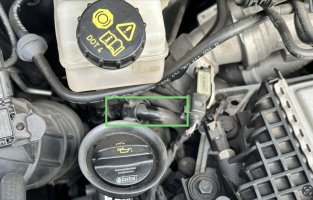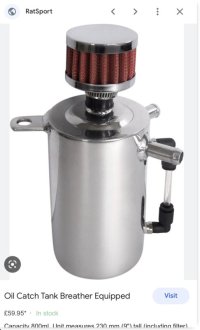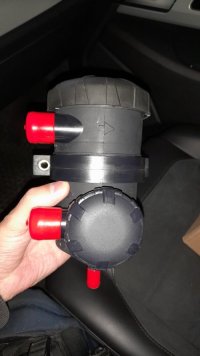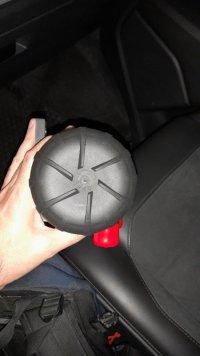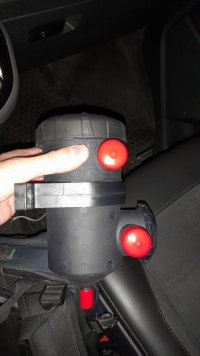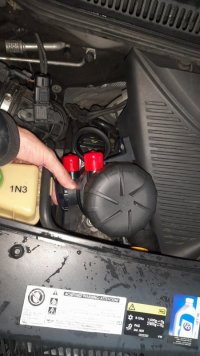Therealredford
Member
Have you done this?The dirty air comes in one and through a wire gauze filter in the centre. Oily residue collects in the bottom and clean(er) air goes back into the intake. I just run a pipe down from the bottom connection to a wheel arch and put an in-line tap on the end. I just drain it whenever I think about it. No smeg goes back....definitely a bad idea!

